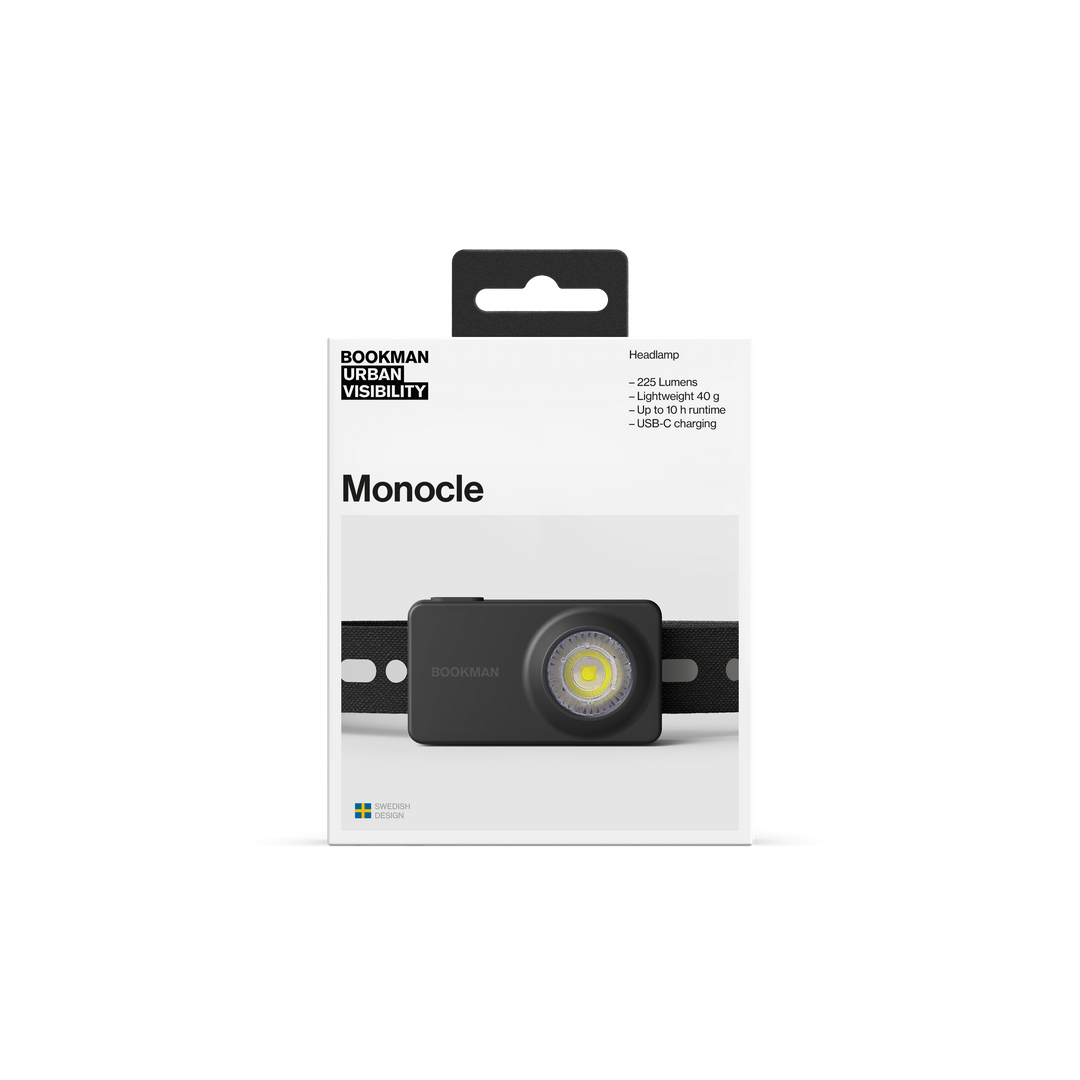How Many Lumens for Your Bike Light? A Guide to Choosing the Right Brightness
When it comes to choosing the perfect bike light, brightness matters – but how bright is bright enough? The answer depends on where, when, and how you ride. Whether you're commuting through city streets or tackling rugged trails in the dark, selecting the right lumen output is key to ensuring your safety and visibility. In this guide, we’ll break down how many lumens you need for different cycling scenarios.
What Are Lumens?
First, let’s clarify: lumens measure the total amount of visible light emitted by a source. The higher the lumens, the brighter the light. For bike lights, this translates into how well you can see the road ahead and how visible you are to others. Lux and Candela are other measures.
How Many Lumens Do You Really Need?
Different riding conditions call for different levels of brightness. Below are recommendations based on common cycling use cases for front lights. Rear bike lights typically require fewer lumens than front lights, as their primary function is to ensure you're visible to others, rather than illuminating the road.

1. Urban Commuting (50–200 Lumens)
If your commute involves well-lit city streets, you don’t need an extremely bright light. Here, the primary goal is to be seen by drivers, pedestrians, and other cyclists. The busier the traffic however, the more power you might need when competing for attention.
- Recommended Lumens: 50 to 200
-
Why: Streets in urban areas usually have streetlights, so you don’t need a high-output light to see the road. A 20 to 100-lumen rear light is sufficient for visibility, while a front light around 50 to 200 lumens ensures you're noticed by others without being blinding.
- Example: The Curve light offers 220 lumens, perfect for daily commutes in the city where you need both power and battery life. A more compact option is the Block Light that fits easily into your pocket or bag when not in use.

2. Rural Roads or Low-Light Suburbs (200–600 Lumens)
For riders on quieter roads or suburban areas with limited street lighting, a brighter light is necessary to both see and be seen. These roads often have obstacles or uneven surfaces that require better visibility.
-
Recommended Lumens: 200 to 600
-
Why: A front light between 300 and 600 lumens will illuminate the road ahead, helping you avoid hazards like potholes or debris. A rear light of 50–100 lumens ensures visibility from behind.
- Example: The Volume™ 800 front bike light delivers 800 lumens, offering plenty of light for semi-lit roads and darker environments also on lower settings offering longer battery life.
3. Mountain Biking or Off-Road Trails (1000+ Lumens)
For mountain biking or off-road adventures in the dark, you’ll need lots of power, especially if going fast and downhill. These environments are completely unlit, with rough terrain, tight corners, and potential obstacles. Two lights from different angles helps with depth perception. A good combination is a powerful and wide beam light on your bars and a lower powered but more focused light on your helmet. The bar light will illuminate the trail ahead whereas the helmet light will improve depth perception and ensure wherever you look is lit up.
- Recommended Combined Lumens: 1000 or more
- Why: Off-road trails require a minimum of 1000 lumens to properly light your path, obstacles and surroundings.
- Example: The Volume™ 800 offers plenty of power for the focused light ideal for technical trails and longer night rides. With its intuitive power wheel, you can easily adjust the brightness to suit changing conditions. Combine it with a stronger light on the bar, perhaps with a separate batterypack.
4. Daytime Riding (200–600 Lumens with Day Flash Mode)
It may sound surprising, but bike lights are essential even during the day – particularly in overcast or low-visibility conditions. A bright, flashing light helps drivers and pedestrians spot you more easily.
- Recommended Lumens: 200 to 600 with Day Flash Mode
-
Why: Daytime lights help you stand out, especially when the sun is low, or you’re cycling in busy areas. Look for a light with a dedicated daytime flash mode for maximum effectiveness.
- Example: The Volume 1500 head light has specific day time flash options with long runtimes and is a solid choice for increased visibility in daylight as well as during night.
5. Gravel Biking (800–1500 Lumens)
Gravel biking presents a mix of road and off-road conditions, often in remote areas where there’s no ambient light. You’ll need a versatile light with enough power to illuminate unpredictable terrain while maintaining battery efficiency for longer rides. Riding fast? - Then you need power in the higher range to have time to spot obstacles.
- Recommended Lumens: 800 to 1500
-
Why: A light in the 800-1500 lumen range is ideal for gravel biking. It’s bright enough for unlit paths and dark gravel roads, but still efficient enough to last on longer rides.
- Example: The Volume™ 1500 provides a powerful 1500 lumens with a wide enough beam perfect for lighting up the gravel path and enhancing visibility in low-light environments. The easy changing of modes, help adjusting the brightness for changing situations and will save you significant battery life.

6. Night Road Cycling (600–1000 Lumens)
For serious road cyclists riding at night, a bright front light is crucial to illuminate the road and any potential hazards, especially at higher speeds.
Recommended Lumens: 600 to 1000
Why: On quiet roads with no street lighting, you’ll need a front light with 600–1000 lumens to safely light your path. A rear light with 100 lumens ensures you’re visible from behind.
Example: The Volume™ 800 with 800 lumens is excellent for road cyclists, combining powerful illumination with long battery life and a lightweight body.
7. Kids' Bikes (15–50 Lumens)
Safety is critical when it comes to kids riding bikes, and a light that’s bright enough to ensure they’re seen but not too overwhelming is perfect for younger cyclists, depending on the situation. Also remember reflective vests and additional lights or reflectives for the helmet can be a good option.
- Lumens: 20 to 50 depending on situation
-
Why: A front light between around 50 lumens ensures that kids are visible to others without being too bright or distracting. Rear lights are equally important, with flashing modes to grab attention.
- Example: The Block Light Rear, offering 18 lumens, is compact, easy to attach, and perfect for making young riders more visible on the road.
While the above can be good guidelines these things have big impact on how many lumens you need:
Several variables influence how many lumens you need for your bike light, including:
Riding Environment: Well-lit urban streets require fewer lumens compared to dark, rural, or off-road areas where brighter lights are necessary.
Speed: The faster you ride, the brighter your light should be to give you more time to react to obstacles or hazards ahead.
Weather Conditions: Rain, fog, or snow can reduce visibility, making a higher-lumen light essential for ensuring you're both seen and can see clearly.
Time of Day: Night riding requires more lumens to illuminate your path, while daylight riding may only require a lower-lumen flashing light for visibility.
Battery Life: High-lumen lights consume more battery power, so you’ll need to balance brightness with how long you plan to ride without recharging.
Beam Pattern: A narrow beam might need less lumen to see far, but more lumen if you need to see wide. Chose a bike light with suitable beam for better use of your lumens.
Type of Terrain: Rough or uneven terrains, such as trails or gravel paths, require brighter lights to safely navigate the unpredictable environment.
Traffic Levels: On busy streets with lots of distractions, you need a brighter light to catch the attention of drivers and pedestrians. In low-traffic areas, you might get away with fewer lumens, since there are fewer competing light sources.
The best bike light for you depends on your riding environment and needs. For urban commuters, a low-lumen light might be perfect, while mountain bikers need powerful beams to stay safe on the trails. Gravel bikers and kids also need specialized lights to suit their unique conditions. No matter where you ride, having the right light will not only improve your visibility but make your ride safer and more enjoyable.







